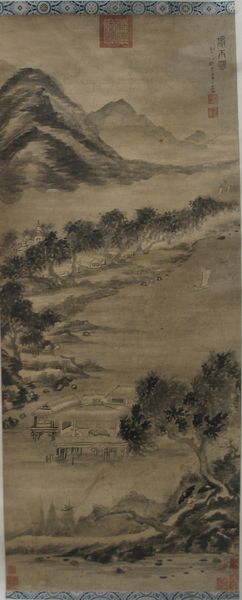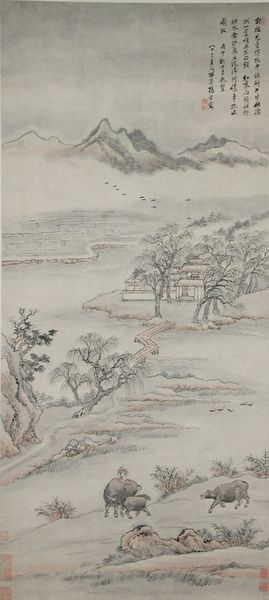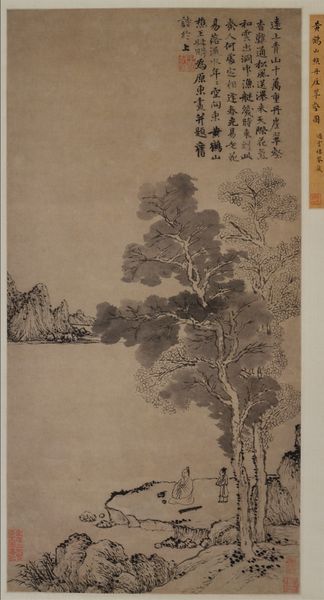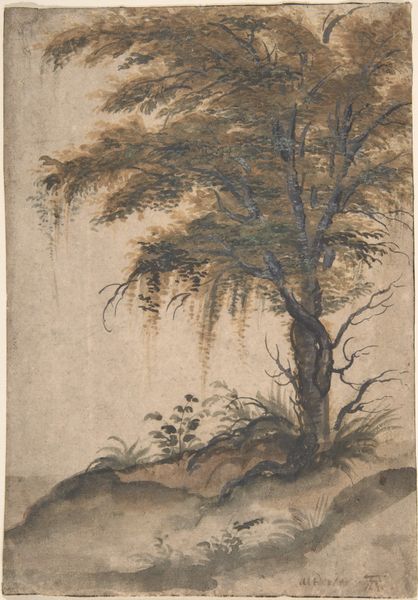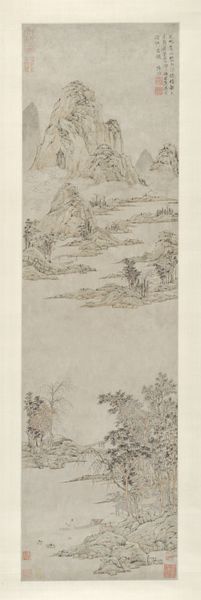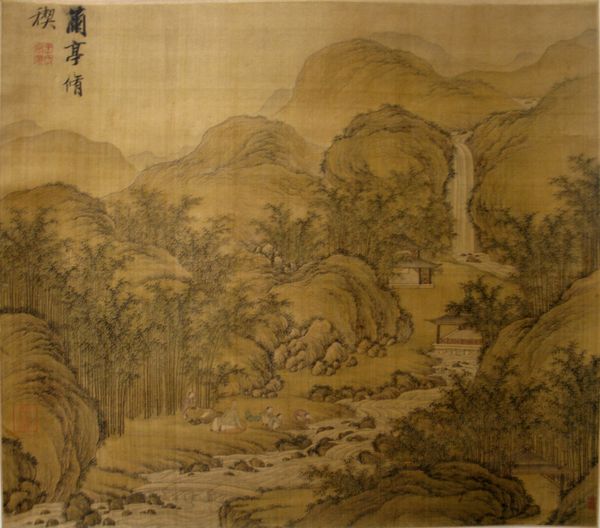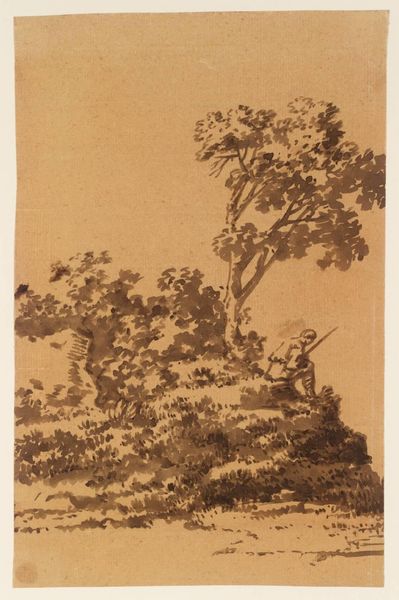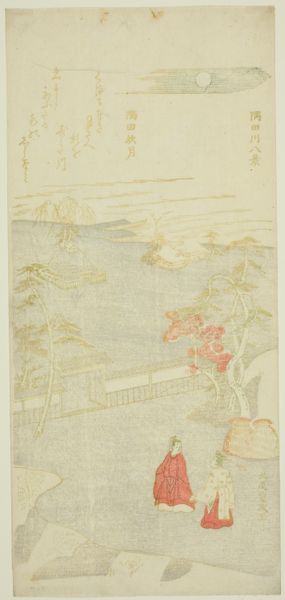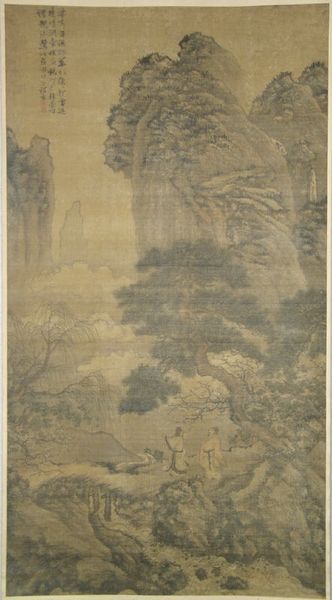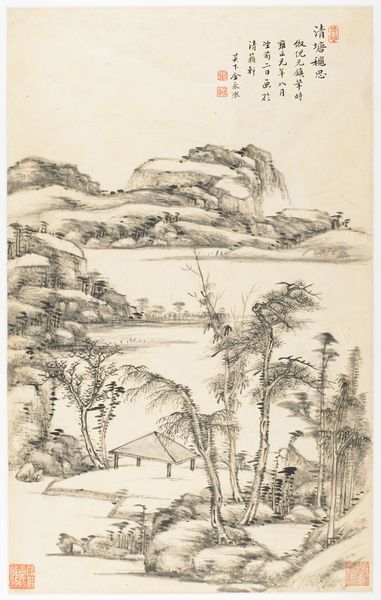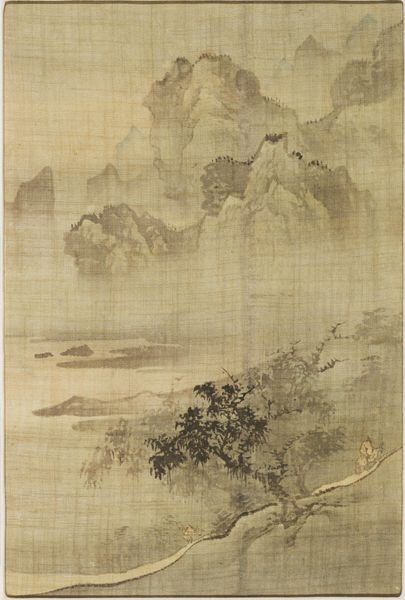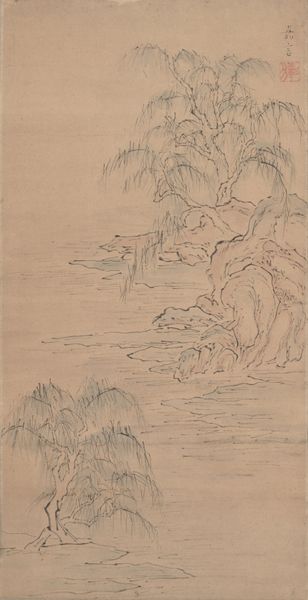
painting, ink
#
painting
#
asian-art
#
landscape
#
ink
#
orientalism
#
china
Dimensions: Image: 46 3/4 x 22 1/4 in. (118.7 x 56.5 cm) Overall with mounting: 100 1/2 x 29 5/8 in. (255.3 x 75.2 cm) Overall with knobs: 100 1/2 x 33 3/4 in. (255.3 x 85.7 cm)
Copyright: Public Domain
Editor: We're looking at Wang Hui's "Landscape in the Style of Li Gonglin," created in 1702 using ink on, I think, paper. It feels…distant. The washes of ink create a hazy, dreamlike world. How do you interpret this work? Curator: That sense of distance is key. The "style of Li Gonglin" signals a return to an idealized past. Wang Hui, working in the Qing dynasty, consciously evokes the Song dynasty, specifically its restrained ink monochrome. Notice the brushstrokes—delicate yet firm—evoking timeless mountains and scholar-retreats. How do you think that choice speaks to cultural memory? Editor: I see what you mean about evoking the past. Was it about longing? Or perhaps legitimizing the current dynasty through that connection? Curator: Precisely! Consider the cultural weight of the landscape itself. In Chinese painting, landscapes aren't merely scenic; they are philosophical statements, microcosms reflecting social harmony. Mountains represent stability, water signifies fluidity. Here, we see an attempt to establish order. Can you find the human element? Editor: The buildings nestled in the landscape! So humans aren't separate from nature here. Curator: Indeed! Humans in harmonious integration with it. But doesn’t the act of painting ‘in the style of’ suggest more than simple integration; it suggests something perhaps about the burden of artistic tradition? Editor: That's a powerful point. It's not just about painting a landscape, it's about engaging with a whole artistic legacy. I see how loaded each brushstroke can be now. Curator: The landscape isn't a passive vista; it's an active site of cultural negotiation. I always learn more when asked to explain. Thank you for that. Editor: Thanks for sharing that lens; it’s not just a pretty picture but also loaded with meaning about identity.
Comments
No comments
Be the first to comment and join the conversation on the ultimate creative platform.
